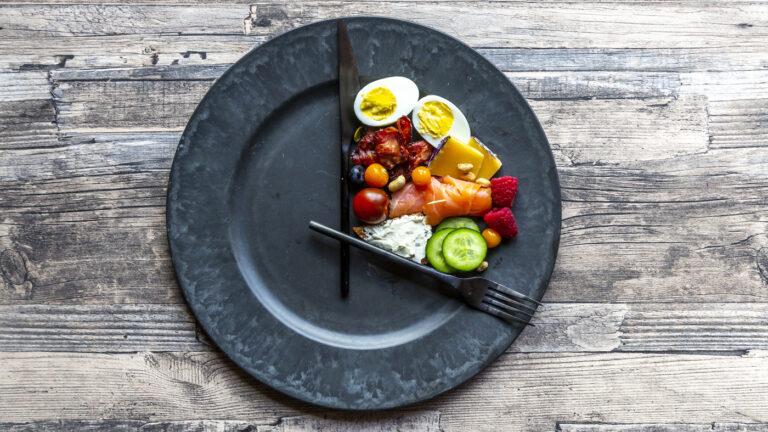Humans are growing more health conscious as their countries approach a health crisis. The vulnerability of healthcare systems, even in high-standard-of-living nations, was pretty much exposed during the COVID-19 outbreak, which triggered many people to take better care of their physical and mental health. People are making better decisions, which is excellent! So they believe so… Food businesses are alarmed since they are aware that their goods are unhealthy. What should they do if they want to stay in business?
They include information on the products’ boxes that makes them appear healthy. By changing their advertising and attaching a few phrases to their packaging, food businesses are deceiving consumers into believing that they are capable of eating healthily.
Here are a few strategies used by businesses to deceive you into believing that you’re eating healthily, along with some steps you may take to avoid them.
100% Natural
We know, it sounds good. This foodstuff is entirely natural and was created by “Mother Nature”. Wrong! The Food and Drug Administration (FDA), the US federal agency tied with the Department of Health, for instance, hasn’t established any standards that specify what constitutes a “100% natural” or “all-natural” food. Any business can use this word on the packaging to attract customers. All-natural foods can contain artificial sweeteners, refined carbohydrates, hydrogenated oils, and high fructose corn syrup. Call us crazy, but something convinces us that trees don’t naturally produce hydrogenated oil.
Reading the nutrition data and ingredients is the most effective method for avoiding this marketing gimmick. The product isn’t entirely natural if there are too many substances that sound processed or you can’t pronounce them.
You can determine whether or not a food is healthy by looking at the nutrition facts. Examine the serving size, the number of calories in each serving, as well as the grams of fat, carbohydrates, and protein. If you can eat a substantial amount of that item while just consuming a small amount of fat or calories, it’s certainly healthy food!
Buying genuinely organic food is another method to avoid this. The U.S. Department of Agriculture (USDA) or your country’s executive agency (ministry) in charge of creating and carrying out legislation governing food controls the use of the “Organic” seal. Foods with the organic label have at least 95% organic ingredients (no genetically modified ingredients, radiation, hormones, additives, or antibiotics). Products may use the claim “produced with organic ingredients” if at least 70% of their ingredients are organic. You should still read the nutrition label, though, in my opinion.
Also, there’s a third option: So that you get the meals that are worth your time, you can also order them through the best organic meal delivery services. Let’s mention one of these services, Green Chef. It’s the very first meal delivery business to be organically certified, and its premium meal kits feature things like organically grown produce and eggs.
No Sugar Added or Sugar-Free
It’s a terrific strategy to be health conscious to cut back on sugar. However, goods that advertise being sugar-free or having no additional sugars typically contain artificial sweeteners or sugar alcohols that are manufactured in a lab.
Sugar alcohols can accumulate since they also have calories. Not to mention that both of these can lead to stomach discomfort and issues (you don’t want to bloat, right?). Actual sugar or foods containing real sugar are preferable. Use fruit, honey, maple syrup, or agave in moderation to sweeten dishes without adding any processed sugar.
The following are common sugar alcohols and sugar substitutes to avoid: aspartame sucralose, saccharin, cyclamate, sorbitol, and maltitol.
Whole Wheat vs. Wheat vs. Whole grain vs. Multigrain
All of these names are frequently used to describe bread and bread products. But which are genuine scams, and which are good for you?
When a product is labeled “wheat”, it simply signifies that wheat flour was used in its production rather than conventional white flour. Compared to white flour, it doesn’t provide any more health advantages. Both have had their nutrients removed during processing.
If the label reads “enriched wheat”, it signifies that some nutrients were first removed during processing and were subsequently restored back in. Wheat isn’t necessarily healthier than white flour just because it’s marketed as such. Choose whole grain or whole wheat (more on this in a minute).
Multigrain: Products that contain multiple types of grains are referred to by this marketing word. Multigrain is meaningless if all the grains are unprocessed and undamaged. To determine whether the grains are whole or processed/enriched, read the ingredients. “WHOLE” is the crucial term. Yes, whole grains can be found in multigrain products; just make sure to read the label.
When buying bread or bread-related products, you should search for the terms “whole grain” and “whole wheat”. These describe goods that incorporate whole wheat or whole grain kernels. All of their nutritious content, including protein, fiber, minerals, and vitamins is still present. Not to mention that whole foods can help you feel satisfied for longer and aid in weight loss or weight maintenance.
In conclusion, check for the container bearing the term WHOLE!
Fat-Free
Who wouldn’t desire food that contained less of that repulsive word “fat”? But regrettably, this is yet another deceptive marketing scheme designed to make consumers believe they are eating better.
The conventional and fat-free versions of a product frequently have similar or almost identical calorie counts. The catch is that in order to improve their flavor, versions made without fat sometimes contain extra sugars as well as other additives. Purchase the product in its regular form and reduce the serving size to avoid this. You’ll avoid consuming the calories you would have had if you had purchased the one with added reduced fat, chemicals, and sugar.
Fat-free dairy is an exception to this rule; these dairy products are manufactured with skim milk or 1-2% milk instead of whole milk or cream. This holds true for dairy products including cheese, yogurt, cottage cheese, and others. It continues to be a good idea to review the yogurt and ice cream labels to see whether there is any more added sugar, artificial sweeteners, or sugar alcohols.
Produced Using Real Fruit
Produced using real fruit suggests that the strawberry-flavored candy you’re consuming has some nutritional value. That would be lovely, but in actuality, just because something is made with actual fruit doesn’t guarantee it’s healthy. If “fruit juice concentrate” is listed as an ingredient, the item is simply sugar and not a fruit, based on the Dietary Guidelines for Americans. If a product’s label states “not from concentrate”, it signifies that the juice has been extracted, filtered, and pasteurized.
Minerals and vitamins are lost during the pasteurization and concentration processes, leaving you with pure sugar and little nutritional value. It even says on some packages, “counts as one serving of fruit”. Regardless of whether the food item is considered a serving of fruit or not, eating it will still result in you absorbing extra calories and sugar (and occasionally sugar alcohols or artificial sweeteners).
This trap is simple to fall into, which is why food businesses employ it. When you go grocery shopping, reading the ingredient list and nutrition label is the greatest method to steer clear of all marketing gimmicks. It’s usually not a good decision if there are numerous substances you can pronounce or if the ingredient list is quite long. If a little amount has a lot of calories, you might want to choose something instead, according to the nutrition label. You’ll be more prepared to choose healthier options this way!
As you could see, food manufacturers utilize a variety of marketing strategies to make meals appear and sound healthier than they genuinely are since they are aware that consumers desire to eat better.
This practice of making a product appear healthier than it actually is in order to deceive consumers and persuade them to purchase these unhealthy meals is known as “health washing”. Now, after reading the article, you’ve prepared yourselves to strike back!
This content was originally published here.



















